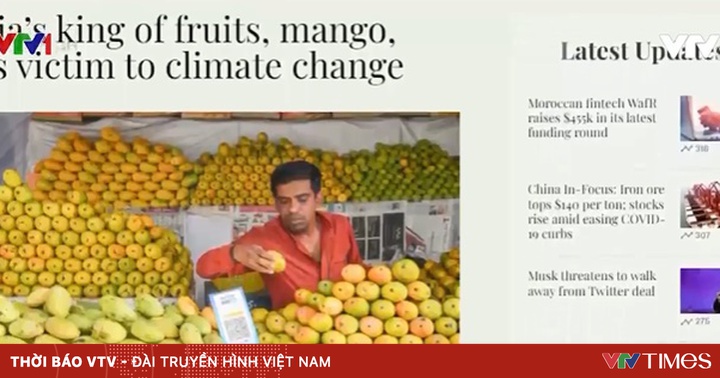What does the government mention in the report to the National Assembly?
The report on the implementation of the socio-economic situation in 2021-2022 was sent to the National Assembly on May 20, signed by the Minister of Planning and Investment Nguyen Chi Dung, authorized by the Prime Minister.
In 2021, 5/12 socio-economic targets will not be achieved
The Minister said that compared with the report at the 2nd Session of the XV National Assembly, the results of the implementation of the 2021 socio-economic development plan after additional assessment have had some positive changes such as: The pepper price index the average consumption (CPI) of the whole year increased only 1.84%, the lowest since 2016 (the number reported to the National Assembly is less than 4%);

Additional assessment of the results of the implementation of key indicators of the socio-economic development plan in 2021 in the report sent to the 15th National Assembly, 3rd session.
State budget revenue (state budget) reached about 1,568.4 trillion VND, an increase of 202.9 trillion VND compared to the amount reported to the National Assembly. The reason, the state budget revenue was quite good in the first quarter and fourth quarter (first quarter revenue reached 31.8% of the estimate, the fourth quarter reached 35.8% of the estimate) is due to a number of industries and fields (banking, securities). , real estate, construction, iron and steel production, automobiles…) are entitled to implemented fiscal and monetary policies, positively impacting production and business activities of enterprises, and development. sudden increase in profit, increase in revenue for the state budget.
At the same time, because the 2021 revenue estimate was developed and submitted to the National Assembly at the time of the third Covid-19 outbreak, the state budget estimate in general and each locality is somewhat cautious. In addition, there were some unexpected unexpected revenues when building the estimate.
Meanwhile, the realized state budget deficit is about 286.5 trillion VND, equal to about 3.41% of GDP (the amount reported to the National Assembly is estimated within the estimate range of 343.67 trillion VND, equivalent to 4% of GDP). );
The trade surplus reached more than 4 billion USD (the reported trade deficit was about 2 billion USD); attracting foreign investment (FDI) achieved impressive results with a high growth rate of 25.2% (the number reported to the National Assembly was a decrease of 0.2-3.4%). This result is mainly due to the cases of new projects, capital adjustment and capital contribution to buy shares with large capital, such as: Long An LNG power plant project I and II (invested capital over 3 years). ,1 billion USD); Project of Intel Products Vietnam Co., Ltd. (adjusted to increase capital by 3.075 billion USD); Hai Lang LNG Power Center Project, Quang Tri Province – phase 1 (investment capital of 2.3 billion USD); Contributing capital to buy shares from Singaporean investors in Vinfast Hai Phong production and trading company limited (value of capital contribution is 2.2 billion USD).
Some other indicators such as, the rate of workers in the age group participating in social insurance is about 36.8% (the number reported to the National Assembly is about 35-36%); the proportion of the labor force in the age group participating in unemployment insurance reaches about 30% (the number reported to the National Assembly is about 28-29%) …

Additional assessment of the results of the implementation of key indicators of the socio-economic development plan in 2021 in the report sent to the 15th National Assembly, 3rd session.
However, there are 5/12 key indicators that have not met the set target, including: GDP growth rate is estimated at 2.58% compared to the target of about 6% (the number reported to the National Assembly is about 3-3). ,5%); GDP per capita is estimated at 3,680 USD, lower than the target of about 3,700 USD (the number reported to the National Assembly is about 3,660-3,680); the contribution of total factor productivity to growth is estimated at 37.13%, lower than the target of about 44 – 47% (the number reported to the National Assembly is about 32%); the rate of poor households according to the multidimensional approach poverty line is estimated to decrease by 0.52 percentage points, lower than the target of 1 – 1.5 percentage points (the number reported to the National Assembly is about 0.5-1 percentage point). hundred); labor productivity growth rate reached 4.71%, about 4.8% lower than the target (the number reported to the National Assembly was about 4.8%).
According to the Government, the restoration of the broken state of some production, supply and labor chains has made positive changes, but progress is still slow.
The financial, real estate, and securities markets have hot times. The ratio of bad debt on the balance sheet continues to be controlled below 2%, however, there is a potential risk that bad debt may continue to increase in the context of the Covid-19 pandemic and the ongoing political and economic situation in the world. complex variable.
As of December 31, 2021, the on-balance sheet bad debt ratio of the credit institutions system is 1.49%. The ratio of off-balance sheet bad debt, unresolved debt sold to VAMC and potential debt becoming bad debt is about 2.88%.
However, cautiously evaluating, if calculating the entire outstanding balance of customers whose debt repayment term is restructured, interest exemption or reduction according to Circular No. 01/2020/TT-NHNN, there is a risk of turning into bad debt. then this figure is about 6.31%.

The restoration of the broken state of some production, supply and labor chains has made positive changes but progress is still slow. (Photo: LT)
Regarding exports, it still depends on the FDI sector and a few markets. The growth rate of imports in 2021 is higher than that of exports; The domestic business sector has a high trade deficit.
In which, the main imports are raw materials, components and accessories for processing, taking advantage of preferential policies, cost of energy, environment, labor… cheap, geographical location. gateway and signed agreements to export goods to major markets such as the US, EU, China, ASEAN…, creating little added value for the economy.
Production and business face many difficulties, in which the service sector faces serious difficulties, especially tourism, accommodation, food and beverage, and passenger transport. Some production and supply chains were broken; Cargo traffic is sometimes congested in some places. The resilience of the economy declined sharply; Many businesses have to stop operating, even be dissolved or go bankrupt.
Although the socio-economic situation in our country in the fourth quarter of 2021 has had very positive changes, the consequences of the epidemic are very heavy, the demand of the economy cannot recover strongly even in the first quarter of this year. Thereby affirming the urgency to quickly and effectively implement the Socio-economic Development and Recovery Program, and soon return the economy to the normal state like before the epidemic”, the Government said. evaluate.
Challenges in 2022, need a timely solution after some cases of stock price manipulation
Assessing the economy in 2022, Minister Dung acknowledged that macroeconomic stability and large balances have many potential risks. The high oil price since the end of February has had a knock-on effect on freight rates, production costs, logistics, commodity prices, raw materials, etc., while petrol price management is still difficult.
CPI in April increased by 2.09% compared to the end of 2021, nearly 2 times higher than the same period in 2018-2021, creating great pressure on macroeconomic stability management, controlling inflation for the whole year 2022, reduce the effectiveness of policies to support people and businesses.
High oil prices will negatively affect many macroeconomic indicators in 2022 and 2023. Therefore, it is necessary to flexibly and promptly manage domestic gasoline prices while ensuring supply in the near future. .

Reported to the 15th National Assembly, the Government said that the stock market had many strong correction sessions, after a number of stock manipulation cases, it was necessary to have timely and drastic solutions to avoid potential risks. (Photo: VTC)
The Government also noted that the prices of gasoline, essential consumer goods and services are still high; the risk of disruption to the supply chain of consumers and production from China; The stock market fluctuates sharply. These are potential risk factors for growth recovery, macroeconomic stability, and the lives of the poor and low-income people.
According to the Government, the risk of bad debt, the shortcomings and inadequacies of the financial and capital markets are issues that need to continue to be paid attention and closely monitored so that they can be handled in a timely manner.
In particular, the stock market, corporate bonds had strong correction sessions in April, a number of cases of price manipulation occurred. share negative impact on the market, investor sentiment; potential risks to growth and financial markets if there are no timely and drastic solutions.
In March 2022, the financial market was shaken by the fact that former FLC Chairman Trinh Van Quyet was detained and detained for investigation and verification of the act of “Manipulating the stock market”, “Concealing information in securities activities”. securities” occurred on January 10, 2022, causing serious damage to investors and affecting the operation of Vietnam’s stock market.
In the bond market, the State Securities Commission decided to cancel 9 lots of bonds belonging to Tan Hoang Minh group and arrest Mr. Do Anh Dung for investigation on charges of fraud and appropriation of property.
at Blogtuan.info – Source: danviet.vn – Read the original article here



